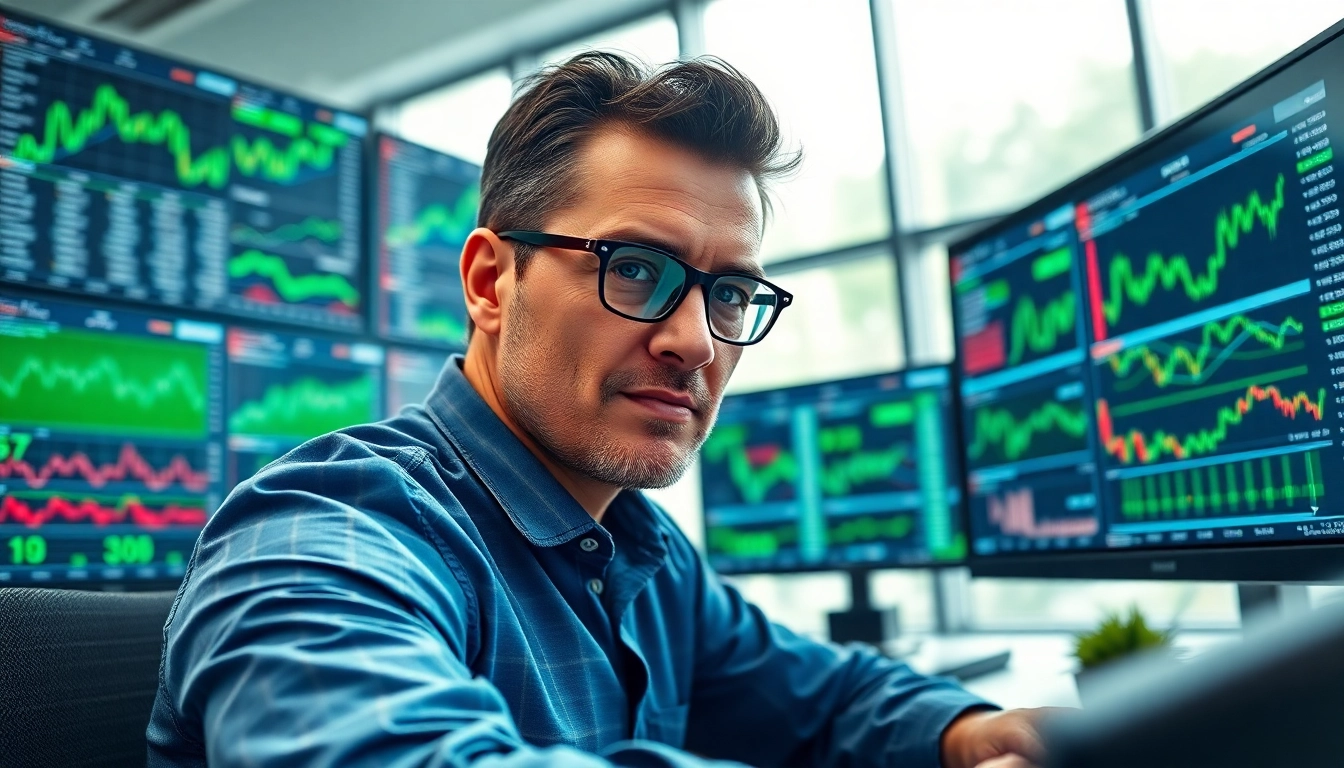1. What are Trade Futures?
1.1 Definition and Basics of Trade Futures
Trade futures refer to a category of futures contracts — a type of financial agreement where two parties agree to buy or sell a specific asset at a predetermined price on a specified future date. This mechanism facilitates hedging, speculation, and risk management for a variety of commodities and financial instruments, including agricultural products, energy, metals, and stock indices. Futures contracts are standardized and traded on regulated exchanges, ensuring transparency and liquidity in the market.
1.2 How Trade Futures Work
The trading of futures begins with understanding the core components of a futures contract, which includes the underlying asset, contract size, expiration date, and settlement method (usually cash or physical delivery). When traders enter a futures agreement, they are speculating on the price movements of the asset over a specified time frame. A buyer, known as the ‘long’ position, anticipates that the asset’s price will rise, while a seller, the ‘short’ position, predicts a decline.
Upon expiration of a contract, if the market price is above the contracted price, the long position realizes a profit, while the short position incurs a loss. Conversely, if the market price drops, the short position profits at the expense of the long position. It is essential to note that most futures contracts are closed before expiration date, allowing traders to retrieve their profits or curtail their losses without taking physical delivery of the asset.
1.3 Types of Futures Contracts
Futures contracts can be broadly categorized into several types:
- Commodity Futures: These contracts involve physical goods like oil, gold, corn, and cattle.
- Financial Futures: This category includes contracts based on financial instruments such as stock indices, Treasury bonds, and currencies.
- Interest Rate Futures: These contracts help manage exposure to interest rate changes and involve instruments like Eurodollar deposits.
- Currency Futures: Contracts that allow traders to hedge against foreign exchange fluctuations.
2. Advantages of Trading Futures
2.1 Benefits Over Traditional Investments
Futures trading offers several advantages compared to traditional stocks and mutual funds. One of the primary benefits is the ability to use leverage, allowing traders to control larger positions with a relatively small amount of capital. This amplification of potential gains can be significantly appealing. However, with higher reward comes higher risk, making it crucial for traders to develop substantial risk management strategies.
2.2 Leverage and Margin in Futures Trading
Leverage in futures trading is a powerful tool, as traders can control a larger contract size compared to their actual investment. Usually, exchanges require a margin deposit that is only a fraction (typically 5-10%) of the contract’s total value. For instance, if a futures contract is valued at $100,000, a trader might only need to deposit $5,000 as initial margin. This allows for significant profit potential; however, it equally poses the risk of considerable losses.
2.3 Risk Management Strategies using Futures
Effective risk management strategies are paramount in futures trading. One vital method is diversification, where traders spread their investments across different futures contracts to mitigate risk. Another approach is to establish clear stop-loss orders, which can help limit potential losses by automatically closing a position at a defined price. Furthermore, traders can utilize options on futures contracts to hedge their positions against adverse movements in market prices.
3. How to Start Trading Futures
3.1 Setting Up a Trading Account
To begin trading futures, an individual needs to set up a brokerage account specifically designed for futures trading. The first step involves selecting a reputable futures brokerage firm. Factors to consider include the commission structure, trading platform, and available educational resources. Most brokers will require personal information, financial history, and an initial deposit to start trading.
3.2 Choosing a Futures Broker
Choosing the right futures broker is vital for trading success. It is advisable to evaluate factors such as trading fees, platform usability, customer support, and educational tools available. Brokers like NinjaTrader, E*TRADE, and Charles Schwab are notable options that cater to both beginners and experienced traders.
3.3 Developing a Trading Plan
A well-structured trading plan is essential for disciplined trading. This plan should outline market analysis approaches, risk management protocols, entry and exit strategies, and performance evaluations. Successful traders regularly review and refine their trading strategies based on their performance and market conditions.
4. Common Challenges in Trade Futures
4.1 Understanding Market Volatility
Market volatility is one of the most significant challenges faced by futures traders. High volatility can lead to rapid price changes and potential losses. It is crucial for traders to stay informed about market news, economic indicators, and geopolitical events that could impact their trades. Employing technical analysis tools can also help traders better understand price movements and trends.
4.2 Avoiding Common Trading Mistakes
To succeed in futures trading, avoiding common mistakes is essential. Traders should avoid the temptation of overtrading, which can lead to high losses due to transaction costs and emotional decision-making. Additionally, ensuring sufficient research backing trading decisions and maintaining a balanced risk-reward ratio are necessary practices. Consistency in sticking to the trading plan can significantly reduce the chance of regret-driven decisions.
4.3 Managing Emotions during Trading
Trading can be emotionally taxing, and managing those emotions is paramount. Traders may experience fear during market downturns or excitement during rallies, which can cloud judgment. Implementing mindfulness practices or trading journals can help traders recognize emotional triggers and develop more rationale-focused decision-making processes.
5. Future Trends in Trading Futures
5.1 The Impact of Technology on Futures Trading
The rapid advancement of technology continues to reshape the futures trading landscape. Algorithmic trading, artificial intelligence, and machine learning have streamlined trading processes, allowing for faster execution of trades and enhanced analysis capabilities. Retail traders today have access to sophisticated trading platforms and tools previously only available to institutional investors.
5.2 Regulatory Changes Affecting Futures
Regulatory changes continue to influence futures trading, with organizations like the Commodity Futures Trading Commission (CFTC) enacting policies to increase market transparency and protect against fraud. Staying abreast of regulatory updates is essential for traders, as non-compliance can result in significant ramifications on their trading activities.
5.3 Predictions for Futures Markets
Looking ahead, several predictions for futures markets are emerging. Increased trading activity in cryptocurrencies and digital assets is anticipated as institutional adoption becomes more widespread. Additionally, rising interest in environmental, social, and governance (ESG) factors will likely shape the types of commodity futures traders gravitate towards.



